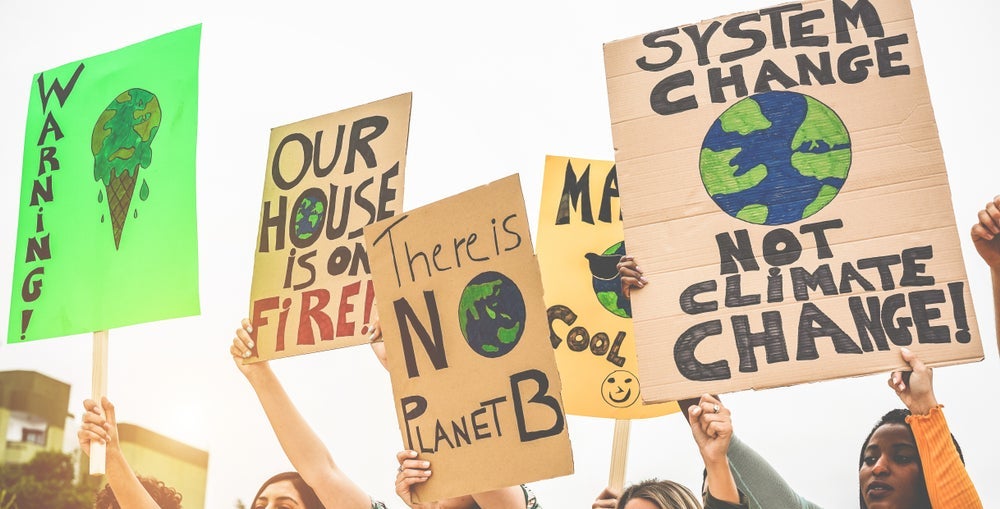What lessons for true and just climate action can be learned from the maltreatment of the Osage nation, as depicted in Killers of the Flower Moon?
Martin Scorsese’s Killers of the Flower Moon easily demonstrates the imperative and urgency of just and representative climate activism. From the absence of ‘empowered’ local stakeholders and the systematic eradication of Indigenous livelihoods, to the physical destruction of land, property, and community, the portrayal of life in 1920s Fairfax, Oklahoma, can be used to view what positive climate action could and should be.
Life as and through the lens
The indigenous stewards of the land in the film, the Osage people, are catapulted into danger through the discovery of oil on their lands and the associated wealth that follows. The Osage Nation collectively owned the oil rights and divided up profits equally within the tribe, providing the average Osage family with $65,000 annually, roughly equivalent to $1.1 million today.
Seeing the ‘owl’ truth
Stakeholder representation is vital to any climate work claiming to be truly representative. Using local knowledge and engaging with local people, emphasized throughout the film’s climax, yields the most meaningful action for the most warmly receptive communities. At key moments throughout the film, certain Osage have visions of their homes welcoming foreboding owls, implicitly warning them of impending threats of death.
This ‘sight’ doubles as the dual representation of both indigenous peoples’ longstanding knowledge, intimacy, and cultural embrace of the natural environment and the mutual aid this environment provides these people in return. It reiterates that any climate action, especially in relation to the lived environment, must involve those who are most connected, where connection extends beyond simple ownership or occupancy.
Snakes at your door and in your home
Beyond the importance of fair indigenous representation within climate action, we must also become increasingly skeptical of actions, companies, and individuals that allege to ‘meet climate goals’. William Hale, the architect of the Osage murders, aptly displays the need to query the actions of those who ‘appear’ to care and act. De Niro’s Hale is ostensibly close to the Osage people, participating in their customs, speaking Dhegihan Siouan with local tribe members, and even offering generous reward money for crimes he was responsible for orchestrating. These actions provide him with the proximity to benefit from the Osage wealth and hospitality, and the popularity to avoid scrutiny for those actions enhancing the Native American tribe’s demise.
Hale mirrors the posturing increasingly performed by the largest companies and nations that are metrically most responsible for CO₂ emissions causing the current climate crisis. Fossil fuel companies, while working in the background to delay national and global action for decades, have avoided it by speaking the correct language and engaging with the ‘right people’.
In 2019, the five largest oil and gas companies listed on the stock market spent nearly $200 million on lobbying against climate change action. This money was spent in the background of outward public support for climate action initiatives that their lobbying was designed to prevent. In a similarly holistically evil approach to Hale’s attempted ruination of the Osage people for monetary gain, nine of the top 10 companies that also lobbied most for anti-protest bills since 2017 are fossil fuel companies.
Hoovering up what remains of society
The failure to incorporate Indigenous communities into meaningful climate action and the strategic undermining by companies against such action calls for the need for national and supra-national governments and regulations to compel change. During the Osage Reign of Terror, tribal representatives went to Washington to meet with President Coolidge to ask for further investigation into the 1910s–1920s murders. While Hale would eventually be imprisoned, many more involved in the network of killings avoided justice. The Osage nation was even handed a $20,000 charge by the nascent Bureau of Investigation (now FBI), headed by then-newly appointed director J. Edgar Hoover.
The dangers of climate action
The outrageous standards of justice in the initial decades of the 20th century have continued into the treatment of climate activists today. Of the at least 1,005 environmental and land rights defenders that have been murdered between 2015 and 2021, one in three are indigenous.
Absent representation and potential death at protests which have been structurally crippled by outwardly ‘friendly’ fossil fuel companies (amongst others), must be answered by regulation. To prevent further climate destruction and to learn lessons from the systematic ruination of the Osage nation, their voices must be heard and amplified.
[Link src="https://www.mining-technology.com/all-newsletters?utm_campaign=Verdict%20COP28%20Newsletter%20Subscriptions%20Website&utm_source=GDM%20COP28&utm_medium=Mining%20Tech" title="Don’t miss our coverage of COP28! Subscribe here for exclusive insights & analysis." font-size="20px"]








